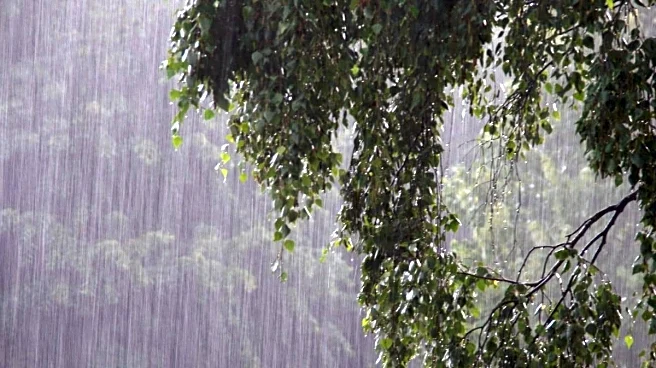The Maldives, renowned as a prime destination for honeymooners and diving enthusiasts, stands as picturesque as any postcard or calendar. Yet, behind this glitzy facade lies a daunting reality: rising sea waves are relentlessly battering the shores of this Indian Ocean archipelago, threatening to engulf its 1,200 coral islands completely.
Small island nations such as Tuvalu, Kiribati, and the Marshall Islands face similar existential threats. Particularly vulnerable to climate change, these regions are grappling with rising ocean temperatures, intense storms, and freshwater shortages that threaten their very existence.
Maldives Is Less Than 1 Meter Above Sea Level
About 80 percent of the Maldives’ land sits less than one meter above sea level, putting the nation at serious risk—not just of erosion,
but of potential disappearance. As climate change accelerates, small island nations such as the Maldives, Tuvalu, Kiribati, and the Marshall Islands are on the frontlines, facing existential threats to their land, population, and global presence.
Is the Maldives Truly Sinking?
The Maldives is not sinking, but it faces increasing threats from rising oceans. Global sea levels have risen approximately 20 cm since 1900, with a current annual increase of 4 mm due to melting icebergs and the thermal expansion of warmer waters. For the Maldives, whose highest point is 2.4 metres, even a modest rise could spell disaster. Projections indicate a rise of 30-50 cm by 2050, with the dire possibility of 77% of the land being submerged by 2100.
This reality became starkly evident in 2024 when strong waves submerged the capital, Male, displacing thousands and causing significant economic losses.
The Intensifying Storms
Cyclones and high tides are eroding beaches and contaminating freshwater sources with saltwater, severely impacting infrastructure. The 2024 submergence of Male highlighted the vulnerability of the islands’ natural barriers, coral reefs, which are deteriorating due to warm water, leaving coasts exposed. Soil salinisation is adversely affecting agriculture, putting tourism, which accounts for 28 percent of GDP, at risk. The disappearing beaches, integral to the country’s economy, are under threat.
Kiribati’s Land Purchase In Fiji
The Maldives’ plight is shared by other small islands across the Pacific and Indian Oceans. Nine islands in Tuvalu, home to 11,000 people, are projected to become uninhabitable by 2050.
Kiribati’s President has already secured land in Fiji as a precautionary measure. The Marshall Islands are battling the compounded effects of rising sea levels and radioactive fallout from US nuclear tests. These nations, contributing negligible emissions, are bearing the brunt of a crisis largely created by industrial giants like the US and China.
Disastrous Consequences If Land Disappears
The potential disappearance of land would have catastrophic consequences. Displacement would be the immediate outcome, with the 540,000 residents of the Maldives potentially becoming refugees seeking shelter in highlands of India, Sri Lanka, or Australia. This resettlement would fracture communities, stripping fishermen of their seas and erasing local languages and traditions like the Bodu Beru drum and island folklore. Economically, the impact would be devastating. Tourism, employing 60 percent of the population, would collapse without beaches, leading to widespread job losses.
Can A Nation Exist Without Land?
The sinking of islands raises profound questions about the existence of nations. International law defines a state based on four criteria: a permanent population, a defined territory, an effective government, and the capacity for international relations. Loss of land threatens all these aspects.
Yet, international law shows flexibility; failed states like Somalia retain their status despite turmoil. Examples such as the Vatican and Nauru, which do not rely on land, hint at potential adaptability, but the sinking of a country remains unprecedented.
How Is The Maldives Fighting Back?
Small island nations are proactively combating rising sea levels. The Maldives is elevating islands by pumping sand and constructing sea walls, while experimenting with floating cities. Hulhumale, a man-made island near Male, houses 100,000 people and stands 2 metres above sea level.
President Mohammed Muizzu is advocating “climate-friendly” tourism, including solar-powered resorts.
The Maldives’ struggle is a preview of coastal crises globally, from Mumbai’s slums to Miami’s beaches. By 2100, around 200 million people worldwide could be displaced due to rising seas. In India, with its 7,500-kilometre coastline, low-lying areas like the Sundarbans face threats to 40 million people.


/images/ppid_59c68470-image-175826502950075160.webp)



/images/ppid_59c68470-image-175828752980119845.webp)


/images/ppid_a911dc6a-image-175834107937223452.webp)

/images/ppid_a911dc6a-image-175829430576854238.webp)

